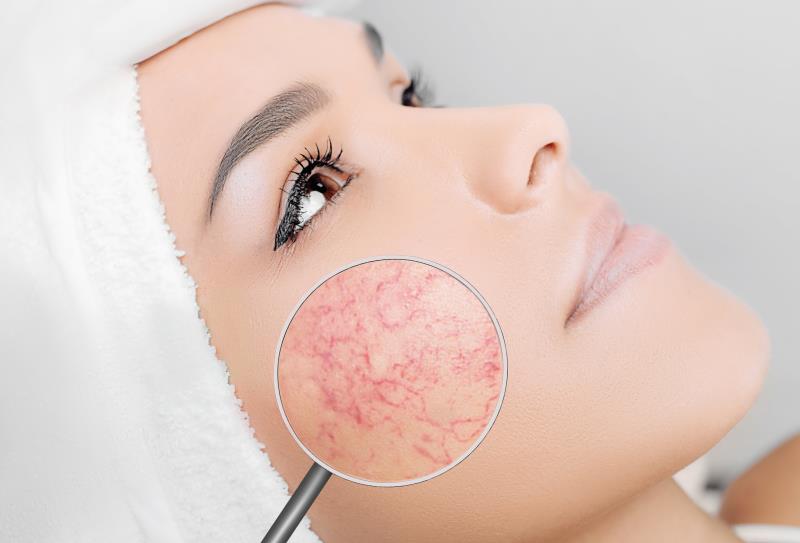
The low-dose modified formulation of minocycline hydrochloride, DFD-29, appears to be safe and efficacious in the treatment of adults with moderate to severe papulopustular rosacea, according to data from the phase III MVOR-1 and MVOR-2 trials.
A total of 653 adults participated in the trials, including 323 in MVOR-1 (mean age 47.2 years, 76.5 percent women) and 330 in MVOR-2 (mean age 51.6 years, 75.5 percent women). These participants were randomly assigned to receive oral DFD-29 (minocycline hydrochloride capsules) at 40 mg, doxycycline at 40 mg, or placebo once daily for 16 weeks.
The coprimary efficacy outcomes were Investigator’s Global Assessment (IGA) treatment success and total inflammatory lesion count reductions. Changes in erythema were also assessed.
IGA treatment success occurred with significantly greater frequency with DFD-29 than with placebo (MVOR-1: treatment difference [TD], 32.9 percent, 95 percent confidence interval [CI], 19.6–46.2; p<0.001; MVOR-2: TD, 34.1 percent, 95 percent CI, 21.3–46.8; p<0.001) and doxycycline (MVOR-1: TD, 18.0 percent, 95 percent CI, 5.0–31.1; p=0.01; MVOR-2: TD, 28.3 percent, 95 percent CI, 17.4–39.3; p<0.001).
DFD-29 was also associated with significantly greater reductions in total inflammatory lesions compared with placebo (MVOR-1: TD, −9.2, 95 percent CI, −11.5 to −6.9; p<0.001; MVOR-2: TD, −6.8, 95 percent CI, −8.9 to −4.8; p<0.001) and doxycycline (MVOR-1: TD, −4.7, 95 percent CI, −6.7 to −2.8; p<0.001; MVOR-2: TD, −3.5, 95 percent CI, −5.4 to −1.6; p<0.001).
Adverse events were documented in 32 of 121 participants (26.4 percent) in the DFD-29 group, 25 of 116 (21.6 percent) in the doxycycline group, and 27 of 76 (35.5 percent) in the placebo group in MVOR-1; and in 51 of 122 (41.8 percent), 40 of 121 (33.1 percent), and 30 of 82 (36.6 percent) in the respective groups in MVOR-2.
The most common adverse events were nasopharyngitis (MVOR-1: 3.3 percent with DFD-29, 1.7 percent with doxycycline, and 3.9 percent with placebo; MVOR-2: 10.7 percent, 8.3 percent, and 15.9 percent, respectively) and COVID-19 (MVOR-1: 3.3 percent, 2.6 percent, and 5.3 percent, respectively; MVOR-2: 5.7 percent, 6.6 percent, and 6.1 percent, respectively).